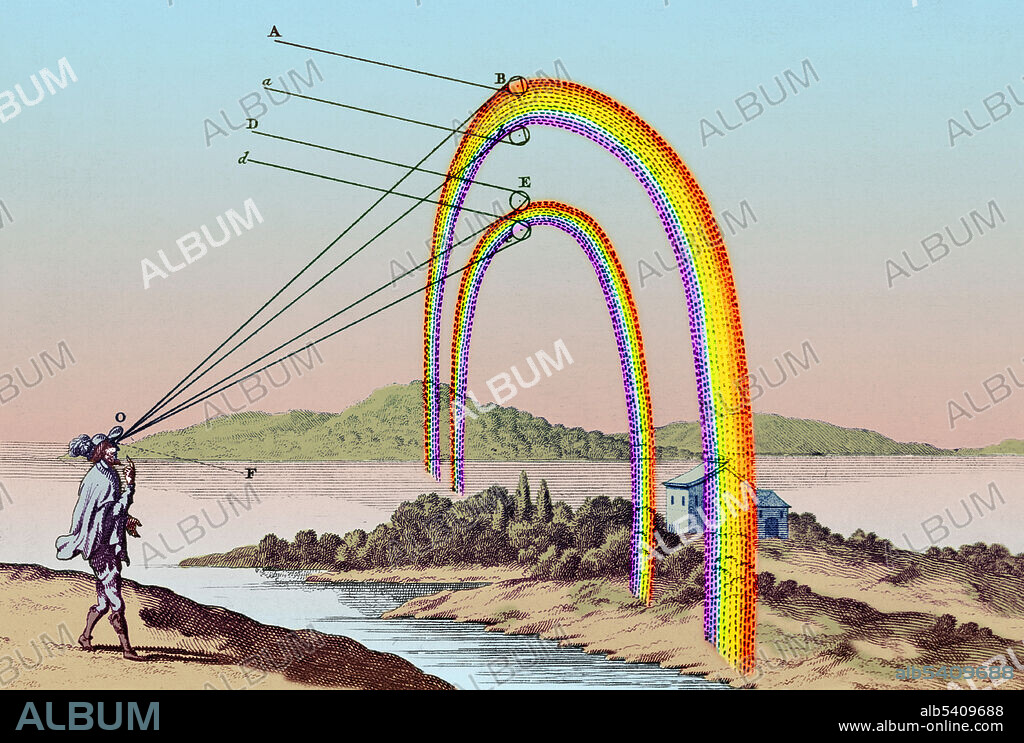alb5409688
René Descartes, Double Rainbow,1637

|
Add to another lightbox |
|
Add to another lightbox |



Title:
René Descartes, Double Rainbow,1637
Caption:
René Descartes' sketch of how primary and secondary rainbows are formed. Theodoric of Freiberg is known to have given an accurate theoretical explanation of both the primary and secondary rainbows in 1307. He explained the primary rainbow, noting that when sunlight falls on individual drops of moisture, the rays undergo two refractions and one reflection before transmission into the eye of the observer. He explained the secondary rainbow through a similar analysis involving two refractions and two reflections. René Descartes' 1637 treatise, Discourse on Method, further advanced this explanation. Knowing that the size of raindrops did not appear to affect the observed rainbow, he experimented with passing rays of light through a large glass sphere filled with water. By measuring the angles that the rays emerged, he concluded that the primary bow was caused by a single internal reflection inside the raindrop and that a secondary bow could be caused by two internal reflections. He supported this conclusion with a derivation of the law of refraction and correctly calculated the angles for both bows. This image has been enhanced.
Credit:
Album / Science Source
Releases:
Model: No - Property: No
Rights questions?
Rights questions?
Image size:
4838 x 3261 px | 45.1 MB
Print size:
41.0 x 27.6 cm | 16.1 x 10.9 in (300 dpi)
Keywords:
1637 • 17TH CENTURY • ART • CARTESIAN COORDINATE • CARTESIAN COORDINATES • CARTESIAN PHYSICS • CARTESIAN • COLOR SPECTRUM • COLOR SPECTRUMS • DESCARTES • DISCOURSE ON METHOD • DOUBLE RAINBOW • DREAM • ENHANCED • EYE • EYEBALLS • EYES • GEOMETRY • HISTORY • ILLUSTATION • ILLUSTRATION • LANDSCAPE • LANDSCAPES • LIGHT • LOOKING • OPTICS • PHYSICS • PRIMARY RAINBOW • RAINBOW • RENÉ DESCARTES • SCIENCE • SECONDARY RAINBOW • SEEING • SLEEP • SPECTRE • SPECTRUM • VISION • VISUAL
 Pinterest
Pinterest Twitter
Twitter Facebook
Facebook Copy link
Copy link Email
Email

